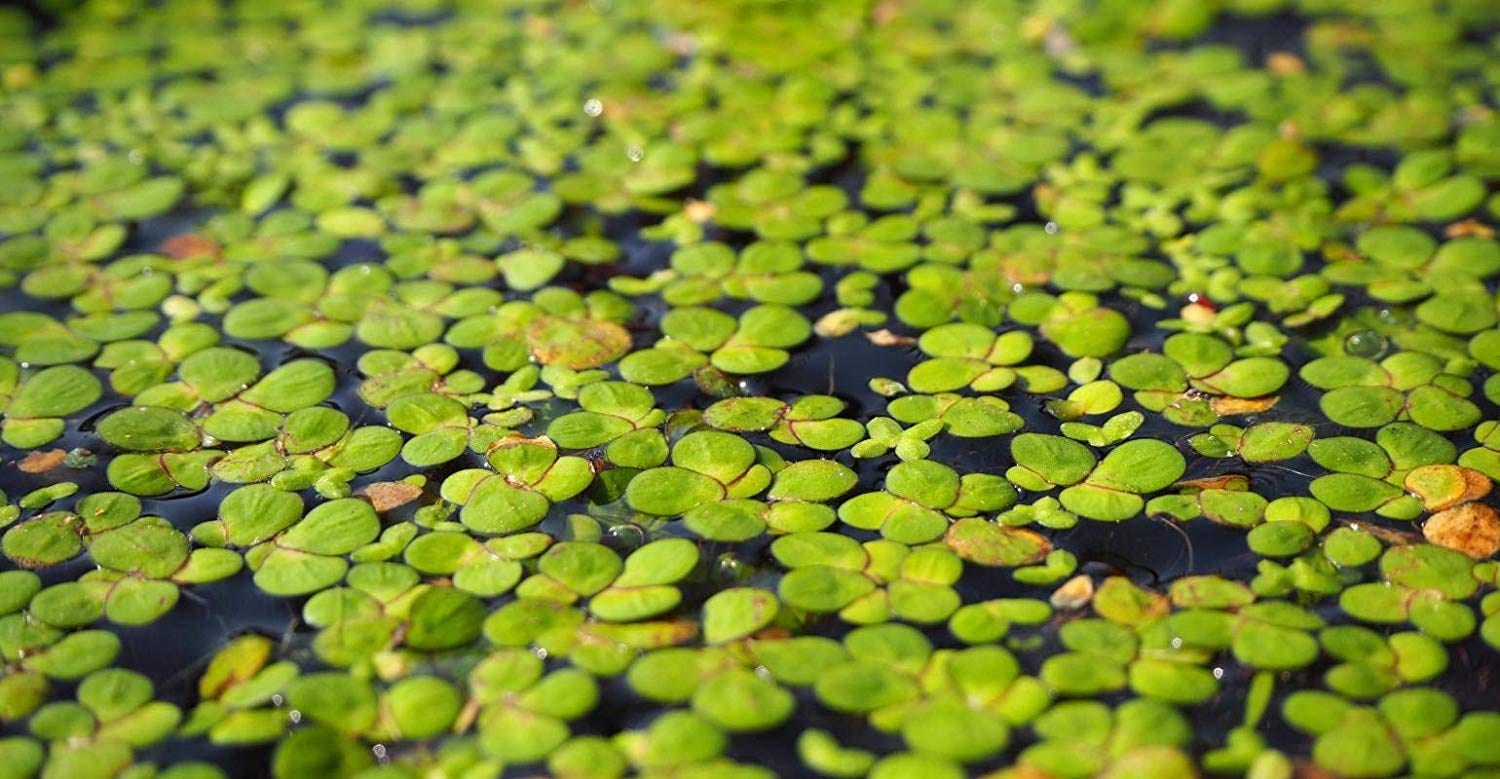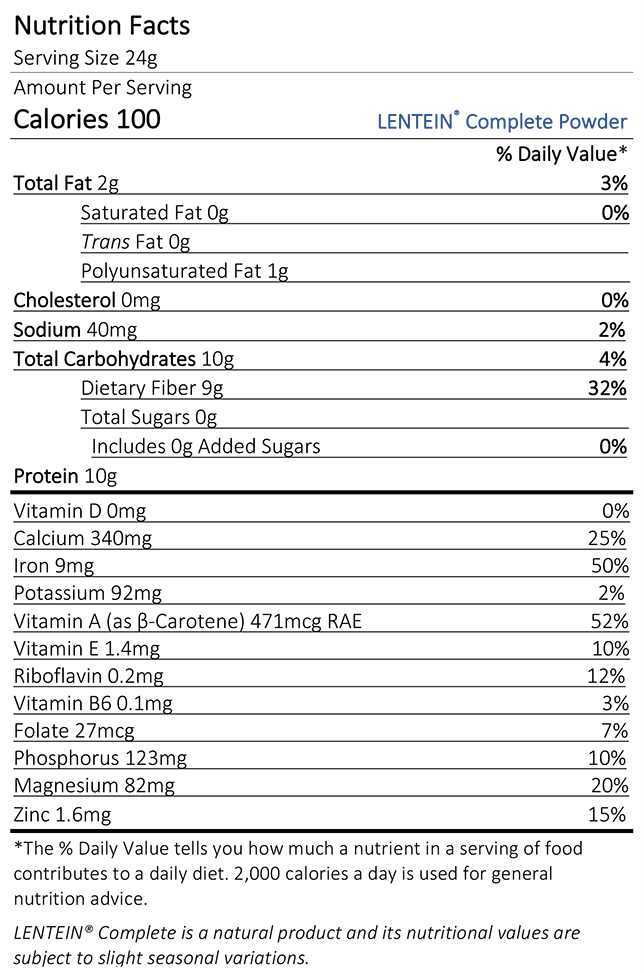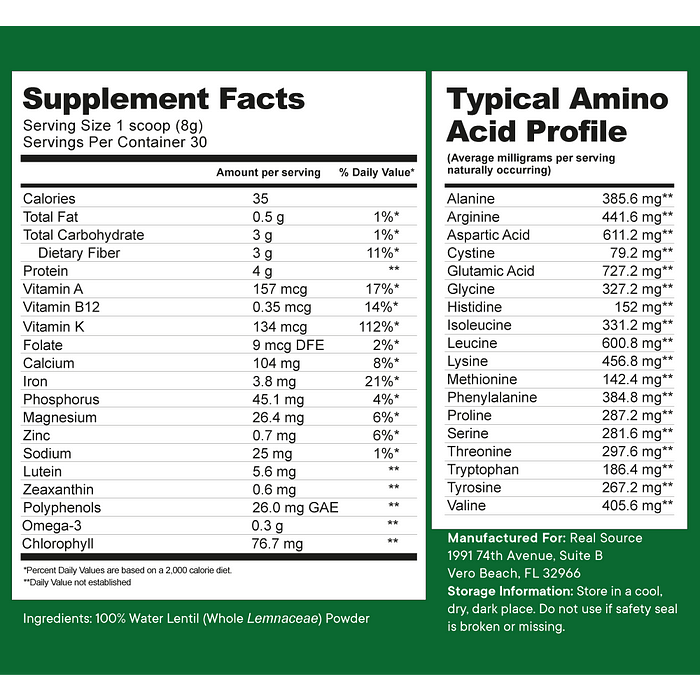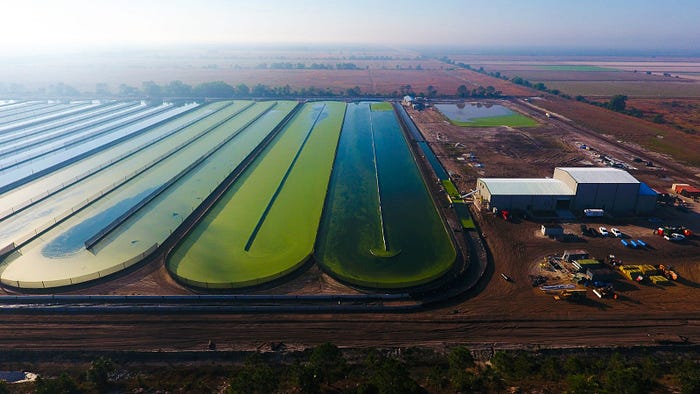Meet Duckweed — A Plant-Based Source of B12.
Producer of plant-based ingredients, Parabel, announced in early Dec. 2019 the discovery of bioactive forms of B12 in their duckweed crops and their patented ingredient — Lentein. Tests were conducted and confirmed by the independent 3rd party Eurofins, one of the top high-end testing labs for major food companies worldwide.
This ‘accidental’ discovery goes against the popular belief that plants are not a source of B12 and represents a game-changing turn for the plant-based industry and vegans.
What Is Duckweed?

Duckweed (aka water lentils) is a conglomerate of tiny flowering aquatic plants from the subfamily lemnoideae found on the surface of stationary freshwaters or wetlands all across the globe, with different adapted genus and species. You most likely have seen one walking by a pond or lake. It’s considered the fastest growing angiosperm and holds the title of the smallest vegetable in the world.
In the food system, despite its name, duckweed is consumed by many other animals other than ducks 🦆, including other aquatic/semi-aquatic animals (fish, crustaceans, geese, birds, small mammals, reptiles, and amphibians) and some insects. Humans have also been traditionally consuming duckweed, especially in Southeast Asia (Burma, Laos, and Thailand), where the Wolffia species is a common low-budget dish and generally referred to as “khai-nam” (“eggs of the water”).
What makes duckweed fascinating is not only its amazing nutritional profile and potential as a food ingredient, but also its sustainability and potential as a natural fertilizer, waste remover, and even biofuel.
Mankai
This duckweed strain derived from the Wolffia species has gained recent commercial popularity, even reaching Harvard School of Public Health’s cafeteria in the form of a smooth. Mankai was created by the Ben-Gurion University of the Negev and is marketed by the high-tech hydroponic producer of Mankai Hinoman, both Israel-based.
One 2019 study by BGU tested the postprandial and overnight glycemic response in obese patients given a Mankai shake vs. yogurt shake equivalent in protein, lipids, and calories. They found improved glycemic control after consumption, lower glucose peak levels, lower next-morning fasting glucose levels, later peak time, faster glucose evacuation, and slightly higher satiety in the subjects. Other studies by BGU reinforce Mankai’s potential for treating anemia and as a quality substitute for animal protein.
According to this 2018 study, though the nutritional profile of duckweed can vary significantly, even within clones of the same species cultivated under the same conditions, the Wolffia species represent a reliable source of amino acids, essential fatty acids (ALA), dietary fiber, trace elements (especially iron), carotenoids, which are linked to eye health, and phytosterols, which play a key role in regulating cholesterol and heart health.
Lentein

Parabel’s duckweed powder ingredient Lentein displays a powerhouse of macro & micronutrients, including vitamin A, vitamin B12, iron, calcium, magnesium, which represent some of the most common deficiencies from a standard American diet.
According to Lentein’s official nutritional label, its composition is made of approximately 42% of crude protein, 38% of dietary fiber, 8% lipids, and <0.5% starch. Though these numbers can vary from a variety of factors, its nutritional profile makes it simply marvelous for human consumption.
Furthermore, Lentein has been officially granted the GRAS label (Generally Recognized as Safe) by the FDA, meaning that it’s safe for consumption both in the form as a food or drink.
Duckweed — Superfood

Duckweed’s nutritional breakdown speaks for itself. Studies performed on different species seem to come to the same conclusion regarding its amazing nutritional profile and suitability for the human diet, thus justifying its label as superfood.
For a consumer-friendly nutritional analysis, I will refer to Real Source’s Water Lentil Superfood (100% Lentein) since the website displays its nutritional label. (*This is not a propaganda)
Water Lentil Superfood’s serving size is 8g and the recommended dose is 1–3 scoops per day (24g max). That translates into a macro composition of 50% protein, 37.5% carbohydrates & dietary fiber, and 6.25% fat.
Protein
Based on cronometer readings, its amino acid profile (including BCAAs) is superior to that of isolated soy (2nd) and pea protein (3rd) on a per gram basis of dry powder. According to official statements, its PDCAAS (Protein Digestibility Corrected Amino Acid Score) also surpasses that of isolated soy and pea protein.
Furthermore, it might be worth mentioning that Lentein contains prohydrolase in its formula, a blend of proteolytic enzymes designed by Deerland Enzymes and to help build muscle mass and accelerate muscle recovery. It acts by helping to break down protein efficiently, enhancing amino acid bioavailability and absorption, and improving protein digestibility.
Carbohydrates
It’s a very low carb (starch) food and a great source of dietary fiber, containing both diabetes-friendly soluble fiber and insoluble fiber (though I’m not sure about the actual proportion). In any case, this means that it can aid digestion and speed up bowel movement (via insoluble fiber) and prevent constipation, reduce blood cholesterol levels, and promote gut health (via soluble fiber).
Fats
On the lipids realm, out of the 1.5g of fat (per 3 servings), 0.9g or 60% comes in the form of omega 3s. Just one serving (8g) provides 38% RDA for females and 55% RDA for males. Hence, 3 servings will easily surpass the RDA for both men and women.
A 2013 study analyzed the total fatty acid and triacylglycerol content across 30 duckweed species. They found that, though levels vary considerably between species, 3 fatty acids comprise over 80% of the total duckweed fatty acids — palmitic acid (saturated), linoleic acid (omega-6), and α-linolenic acid or ALA (omega-3). Moreover, the omega-6 to omega-3 ratio was below 1 (FAO’s recommendation is no higher than 5), making it an excellent omega-3 source, even superior to that of blue-green algae supplements like Chlorella and Spirulina.
Micronutrients
The discovery of vitamin B12 in Lentein (both in raw materials and final product) came by accident according to official reports. Tests were conducted thoroughly to confirm its B12 bioavailability. The results found all the natural bioactive forms of cobalamin: adenosylcobalamin (highest), methylcobalamin, and hydroxocobalamin.
The hypothesis of cross-contamination is already discarded and the primary hypothesis is a symbiosis relationship between the plant and bacteria (cobalamin) living in its roots. Along with partners, Parabel is scheduled to conduct more bioavailability studies to determine the effectiveness and potential of duckweed as a plant-based alternative to treat B12 deficiency.
Despite that, Water Lentil Superfood displays a ridiculous amount of vitamin K (112% RDA per serving), which is essential for blood coagulation, blood calcium regulation, and bone formation. It also helps to cover some of the most common American deficiencies, including (per 3 servings) vitamin A (51% RDA), vitamin B12 (42% RDA), iron (63% RDA), calcium (24% RDA), and magnesium (18% RDA).
Furthermore, it’s a great source of lutein — antioxidant from the carotenoid family which plays a key role in eye health — and polyphenols (mainly phenolic acids and flavonoids) — antioxidants associated with improved digestion, weight, diabetes, and neurodegenerative & cardiovascular diseases.
Oxalates (Antinutrients)
Some strains of duckweed have higher calcium oxalate content, which can be very toxic in high quantities for humans. However, when grown in a medium with lower calcium, oxalate levels are reduced.
According to official statements by Parabel, Lentein contains lower oxalate levels compared to legumes as well as no lectins, antinutrients commonly found in legumes.
Duckweed’s Sustainability

What makes duckweed a much more sustainable crop than other staple food crops is its capacity of doubling its biomass in 1–3 days and continue supply for 9–12 months. For instance, Parabel can harvest it for 10 months out of the year, taking only about 3 weeks to duckweed be ready for harvesting. Besides that, duckweed is suited for more sustainable methods of production such as vertical farming and hydroponics — water and mineral solution-based instead of soil and fertilizers.
Parabel reports that it takes about 71 gallons of water to produce 1 ounce of Lentein (while1 ounce of beef 🥩 consumes approximately 112 gallons of water). However, CEO Anthony Tiarks explains that around 95% of the water used gets recycled due to duckweed’s ability to grow on wastewater. Even though corn, soy, and other staple crops require less water, the same does not get recycled, meaning that year-round there’s more total water waste.
To put things in perspective, while 1kg of tomatoes 🍅 requires about 400 liters of water through intensive farming, the same output could be achievable via hydroponics with only about 70 liters, which is only not better than aeroponics — air and moist-based, without the need for soil or an aggregate medium — which would require only 20 liters of water.
A 2016 UN report predicts freshwater supply to fall short of demand by 40% in 2030. They go further by reminding us that the agricultural sector is responsible for 70% of global freshwater use and as the population and demand for food grow, more pressure gets exerted in the environment. Under the current system, it’s unviable that we can keep living and eating the way we do in modern societies.
On the carbon footprint side, Parabel’s Lentein production emits approximately 1kg of carbon dioxide per kg of duckweed, while cattle farming produces 27kg of C02 per kg of meat (not only worse than lamb — 39kg). Duckweed even gets extra points when you include methane emissions 🐄 into the equation.
Natural Fertilizer
Duckweed is one of the best nitrogen-fixing plants, which are essential to preserving natural balance as well as excellent for organic gardening and farming, forest gardening, permaculture, and other eco-friendly agronomic practices.
Nitrogen-fixing plants have a symbiotic relationship with bacteria living in their roots. While the plant provides energy via photosynthesis to these microorganisms, in exchange, they extract atmospheric nitrogen (N2) and convert it into nitrogen fertilizers that are essential for plant growth. Without this conversion, plants cannot utilize atmospheric nitrogen. This ‘fixed form’ of nitrogen is steadily released through the course of the plant development or decomposition, which fertilizes the soil or water body and helps neighbor plants to grow — everybody wins.
Unfortunately, most crop systems rely on industrialized nitrogen fertilizers, which are extremely high maintenance, unsustainable, and prejudicial to our environment, leading to a plethora of environmental problems such as poor soil quality, eutrophication (or excessive algae growth), coastal dead zones, greenhouse effect, acid rains, etc.
Home-growing
According to Professor Eric Lam of the Department of Plant Biology in the School of Environmental & Biological Sciences at Rudgers University, New Jersey — home to the world’s largest collection of duckweeds — , the university’s current capacity can generate about 5x the amount of corn per acre of land used. However, this only represents about 10% of its potential scalable output.
However, despite its industrial potential, duckweed can be cultivated at home with few resources. Eco-friendly agricultural practices such as urban farming, permaculture, and ecovillages can benefit from its production. As we run against the clock to reduce human footprint and restore our water, air, and soil quality, such practices and more sustainable ways of living become increasingly important so that we become less industry-reliant and more environmentally conscious as a society.
Wastewater Treatment
Duckweed is an excellent waste remover of common water pollutants (nitrogen, phosphorous compounds, etc.) found in eutrophic waters. When there is an excess of these compounds, it causes an overgrowth of harmful algae and phototrophic bacteria that make the water toxic for other living species.
Duckweed water-purifying traits come in action, with the help of symbiotic bacteria living in is roots, by capturing these nutrients and utilizing them for its own benefit. As duckweed grows and occupies the area, they impede the growth of these algae and bacteria that depend on sunlight exposure to survive; thus, outcompeting them. For a deeper understanding of this process, you can check for more information here.
According to EPA, algal blooms create coastal dead zones, produce extremely dangerous toxins that can kills animals and humans, raises treatment costs for drinking water, and hurt industries that rely on clean water. If the water is too contaminated, duckweed simply dies, making it a good indicator of water quality. Hence, duckweed has a well-known but untapped potential for sustainable wastewater treatment.
Biofuel
According to a 2013 study published in ACS’ Industrial & Engineering Chemistry Research, duckweed has the right properties — fast growth; thrives in wastewater; does no impact food supply; harvest easier than algae and other plants — to be utilized as a raw material for biofuel production of gasoline, diesel, and kerosene with existing technology. Results indicate that small-scale refineries could produce cost-competitive biofuel if oil price reaches 100 USD per barrel or 72 USD per barrel for larger refineries.
The Bottom Line
Duckweed represents not only an amazingly nutritious food (aka superfood) with untapped value, but also its production methods are far more sustainable than other industries such as animal farming that consume natural resources at an unsustainable rate and only promote cruelty.
Also, because of its fast-reproduction and high adaptability properties, it can be grown pretty much anywhere where there’s constant sunlight exposure, even at your own home. Vertical farming might be ideal for this. Besides, it has great commercial potential as a natural fertilizer, for wastewater treatment, and as a biofuel.
Every indicator seems to point a green mark ✔ for duckweed. As a vegan, I would not mind having some extra vitamin B12 and nutrition into my diet while having my conscience clear. Even more important, duckweed seems to be part of the shift that we need to break the status quo, change our eating habits, and start working more alongside nature, and not against it. 💚
There’s no rush, but I will be giving duckweed a chance in the next opportunity. What do you think?
Peace and eat your greens ✌🌱
